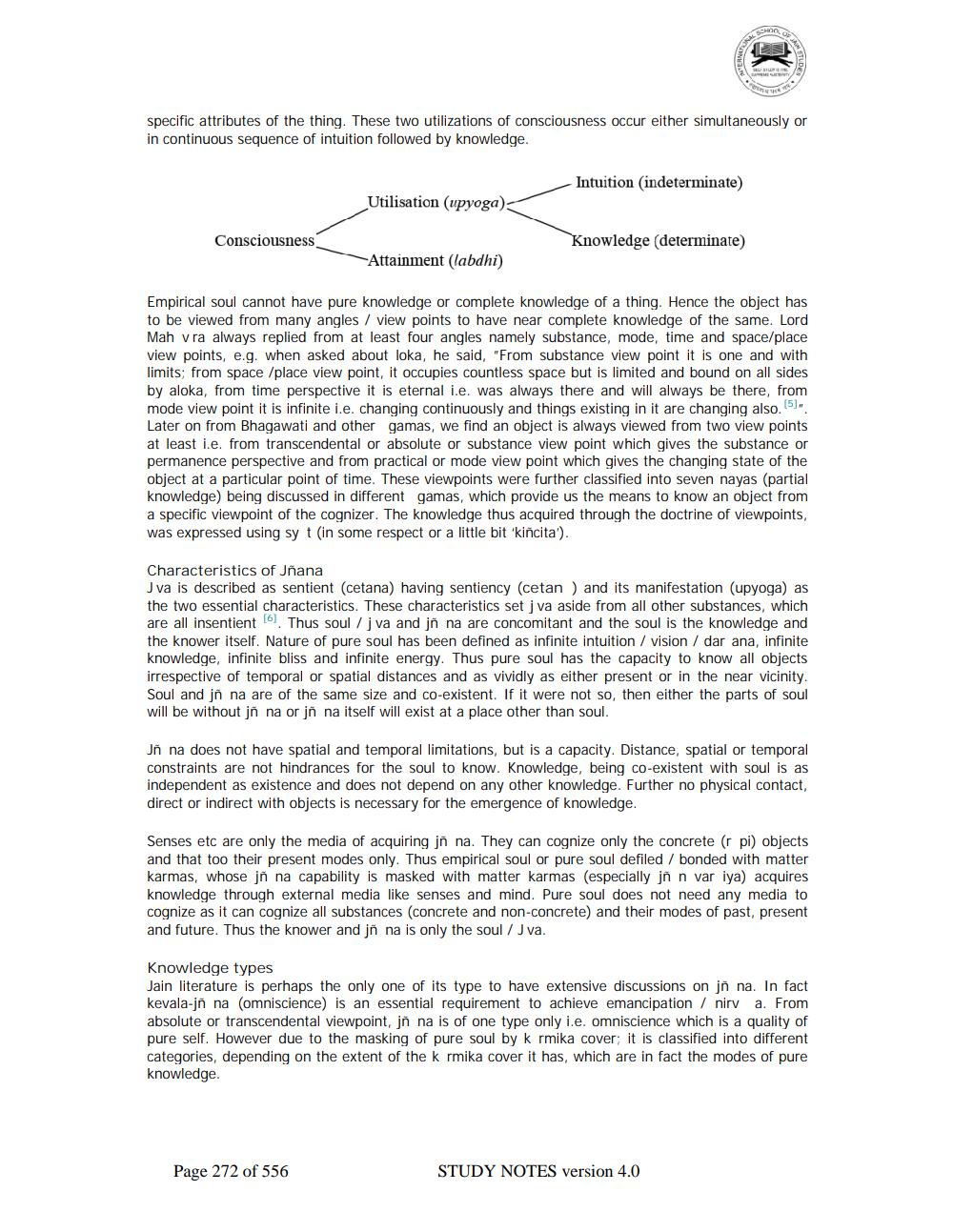________________
specific attributes of the thing. These two utilizations of consciousness occur either simultaneously or in continuous sequence of intuition followed by knowledge.
Consciousness
Utilisation (upyoga)
Intuition (indeterminate)
Knowledge (determinate)
-Attainment (labdhi)
Empirical soul cannot have pure knowledge or complete knowledge of a thing. Hence the object has to be viewed from many angles / view points to have near complete knowledge of the same. Lord Mah vra always replied from at least four angles namely substance, mode, time and space/place view points, e.g. when asked about loka, he said, "From substance view point it is one and with limits; from space /place view point, it occupies countless space but is limited and bound on all sides by aloka, from time perspective it is eternal i.e. was always there and will always be there, from mode view point it is infinite i.e. changing continuously and things existing in it are changing also. (5)". Later on from Bhagawati and other gamas, we find an object is always viewed from two view points at least i.e. from transcendental or absolute or substance view point which gives the substance or permanence perspective and from practical or mode view point which gives the changing state of the object at a particular point of time. These viewpoints were further classified into seven nayas (partial knowledge) being discussed in different gamas, which provide us the means to know an object from a specific viewpoint of the cognizer. The knowledge thus acquired through the doctrine of viewpoints, was expressed using sy t (in some respect or a little bit 'kincita').
Characteristics of Jñana
Jva is described as sentient (cetana) having sentiency (cetan ) and its manifestation (upyoga) as the two essential characteristics. These characteristics set j va aside from all other substances, which are all insentient [6]. Thus soul / j va and jñ na are concomitant and the soul is the knowledge and the knower itself. Nature of pure soul has been defined as infinite intuition / vision / dar ana, infinite knowledge, infinite bliss and infinite energy. Thus pure soul has the capacity to know all objects irrespective of temporal or spatial distances and as vividly as either present or in the near vicinity. Soul and jn na are of the same size and co-existent. If it were not so, then either the parts of soul will be without jn na or jñ na itself will exist at a place other than soul.
Jň na does not have spatial and temporal limitations, but is a capacity. Distance, spatial or temporal constraints are not hindrances for the soul to know. Knowledge, being co-existent with soul is as independent as existence and does not depend on any other knowledge. Further no physical contact, direct or indirect with objects is necessary for the emergence of knowledge.
Page 272 of 556
Senses etc are only the media of acquiring jn na. They can cognize only the concrete (r pi) objects and that too their present modes only. Thus empirical soul or pure soul defiled / bonded with matter karmas, whose jñ na capability is masked with matter karmas (especially jn n var iya) acquires knowledge through external media like senses and mind. Pure soul does not need any media to cognize as it can cognize all substances (concrete and non-concrete) and their modes of past, present and future. Thus the knower and jñ na is only the soul / Jva.
Knowledge types
Jain literature is perhaps the only one of its type to have extensive discussions on jn na. In fact kevala-jn na (omniscience) is an essential requirement to achieve emancipation / nirv a. From absolute or transcendental viewpoint, jn na is of one type only i.e. omniscience which is a quality of pure self. However due to the masking of pure soul by k rmika cover; it is classified into different categories, depending on the extent of the k rmika cover it has, which are in fact the modes of pure knowledge.
STUDY NOTES version 4.0




